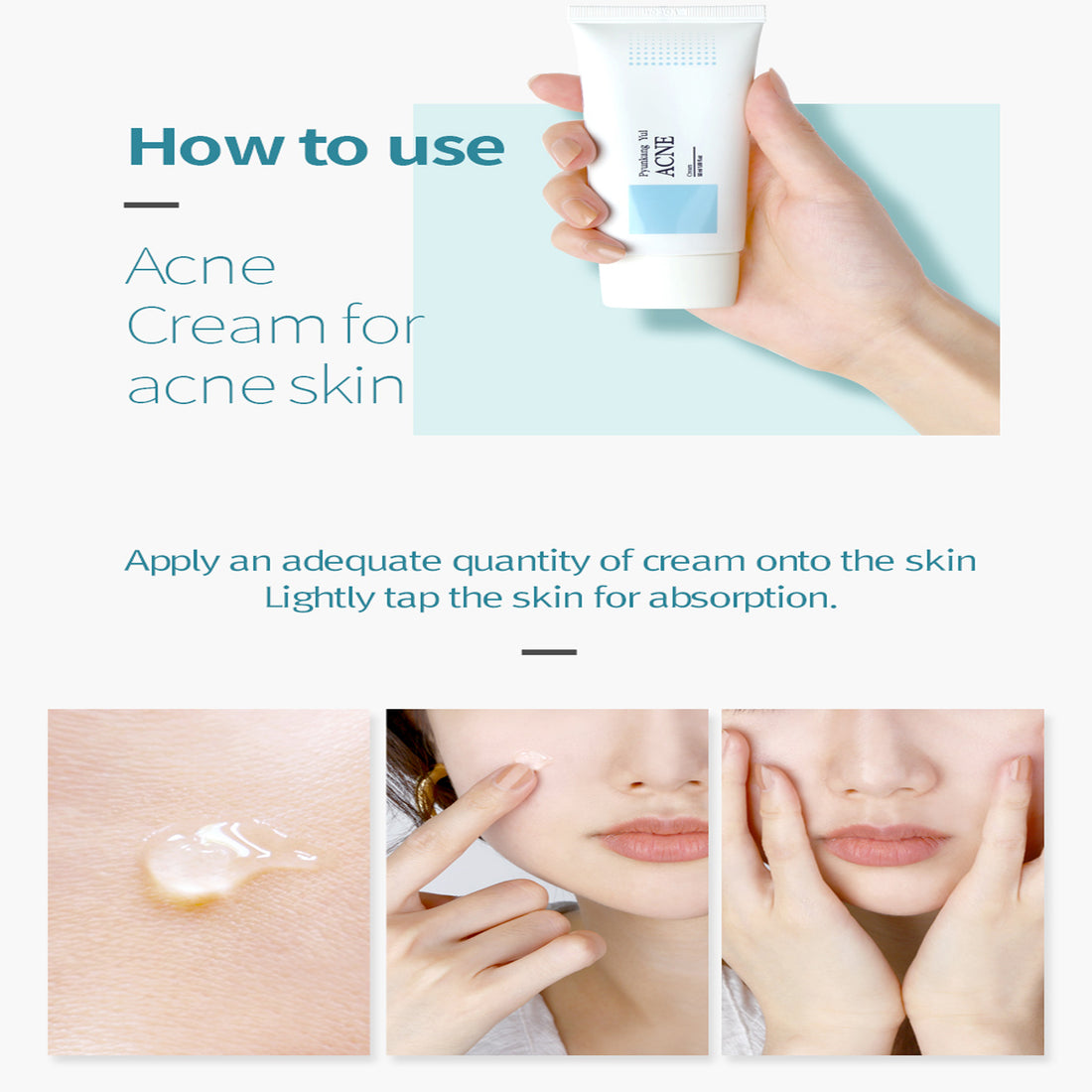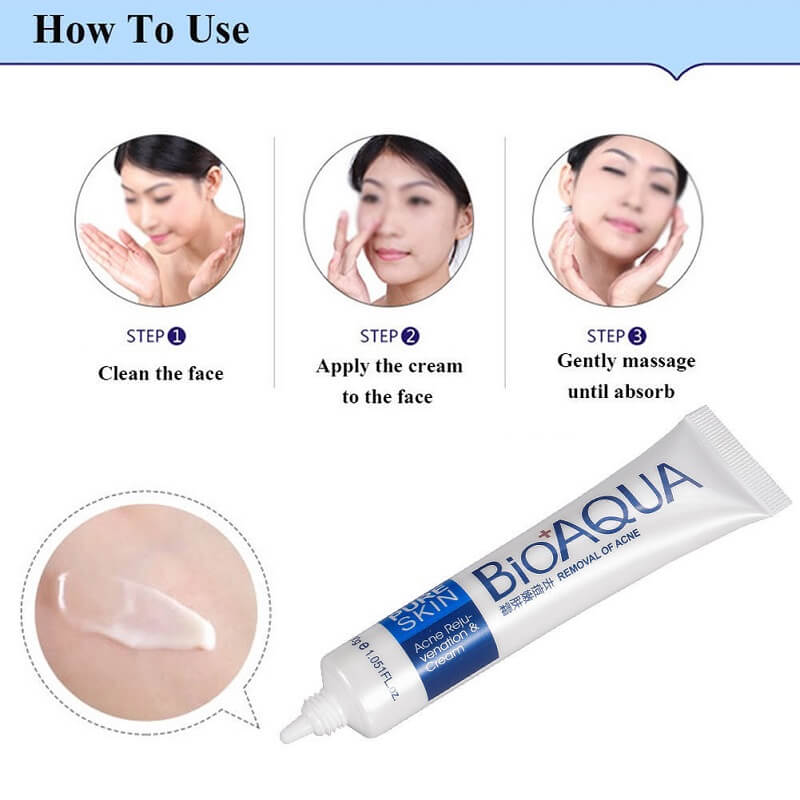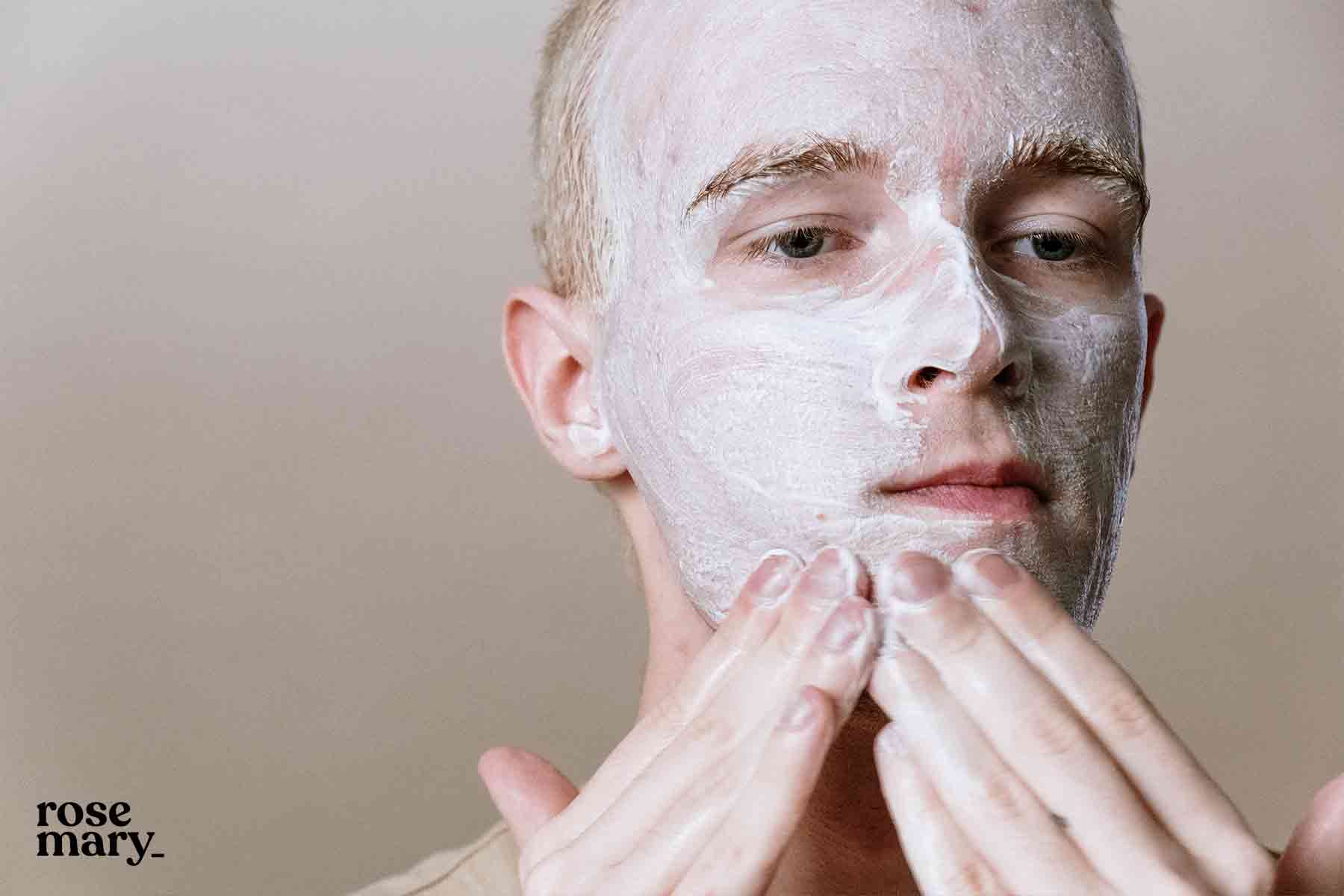Use a pea-sized amount of acne cream for each application. This is typically sufficient for treating a facial area.
Struggling with acne can be a frustrating experience, and finding the right treatment is crucial to improving skin health. Acne creams are a popular choice for many looking to combat breakouts and promote clear skin. It’s essential to use the correct quantity of acne cream to avoid skin irritation and maximize the product’s effectiveness.
Using too much can lead to unnecessary side effects, while using too little may not offer the desired results. By understanding the right amount to apply, individuals can better manage their acne and maintain a healthier skincare regimen. Remember that a consistent, appropriate application is key to seeing improvements in your skin’s condition.
The Importance Of Dosage In Acne Treatment
Getting the right amount of acne cream is crucial. Use too little, and your acne might not improve. Use too much, and your skin could get irritated. Let’s talk about finding that perfect balance. This ensures your skin gets the best care.
Balancing Efficacy And Skin Sensitivity
Finding the right dose of acne cream is a delicate task. Your skin is unique. It reacts in its own way to treatment. A pea-sized amount is often enough for the whole face. This tiny dose can pack a powerful punch without causing harm.
- Start slow: Begin with a small amount. Increase as your skin gets used to it.
- Follow instructions: Always read the label. It tells you how much to use.
- Spot test: Try the cream on a small area first. This checks for reactions.
Risks Of Over-application
More cream does not mean clearer skin. Too much can cause problems. Your skin might peel or get very dry. It could even lead to more redness or irritation.
| Amount | Result |
|---|---|
| Right Dose | Clear skin, no irritation |
| Too Much | Peeling, dryness, redness |
Listen to your skin. Adjust how much cream you use based on how your skin feels. If you notice any signs of discomfort, cut back on the amount you apply.
Types Of Acne Creams And Their Active Ingredients
Understanding the variety of acne creams and their key components is essential for effective treatment. Different ingredients target acne in unique ways. Knowing which active ingredients work best for your skin type is crucial. Let’s explore the common types of acne creams and their active ingredients.
Benzoyl Peroxide And Its Concentrations
Benzoyl peroxide is a popular acne-fighting ingredient. It works by killing bacteria and drying up excess oils. It comes in varying strengths:
- 2.5%: Mild concentration, good for sensitive skin.
- 5%: Moderate strength for mild to moderate acne.
- 10%: High concentration for severe acne.
Always start with the lowest concentration. This helps your skin adjust without irritation. Apply a pea-sized amount to the affected area. Gradually increase strength if needed.
Salicylic Acid: Gentle Yet Effective
Salicylic acid is another key player in acne treatment. It works by exfoliating the skin and clearing pores. It’s gentler than benzoyl peroxide, making it suitable for all skin types. Here’s how to use it:
- Choose a product with 0.5% to 2% salicylic acid.
- Apply a small amount to the entire affected area.
- Use once or twice daily after cleansing.
Remember, overuse can lead to dryness. Stick to a small, dime-sized amount for best results.
Determining The Right Amount Of Acne Cream
Determining the right amount of acne cream is crucial for effective treatment. Too little may not be effective. Too much can irritate the skin. Finding that perfect balance is key to clear skin.
General Guidelines For Application
Start with a pea-sized amount. This small dollop should cover the face evenly. It’s tempting to use more, but resist. Your skin can absorb only so much at one time. Apply the cream to clean, dry skin. Use gentle, circular motions. Avoid the eye area. It is delicate.
- Wash your hands before and after application.
- Apply once or twice daily, as directed by the product or your dermatologist.
- Be patient. Acne treatments take time to work.
Adjusting Dosage Based On Acne Severity
Acne severity influences the amount of cream you need. Mild acne often requires less. Severe cases may need more.
| Acne Severity | Recommended Amount |
|---|---|
| Mild | Pea-sized for the entire face |
| Moderate | Pea-sized; may apply a small additional amount to problem areas |
| Severe | Pea-sized; follow dermatologist’s advice for extra application |
Listen to your skin. If dryness or peeling occurs, reduce the amount. Your skin needs time to adjust. Follow your product’s instructions carefully. Consult with a dermatologist for personalized advice.

Credit: pyunkangyul.us
Application Techniques For Maximum Benefit
Exploring the right application techniques can make a significant difference in your acne treatment effectiveness. Let’s dive into how to apply acne cream for the best results.
Spot Treatment Vs. Full-face Application
Choosing between spot treatment and full-face application depends on your acne type.
- Spot Treatment: Use a small amount directly on pimples.
- Full-Face Application: Apply a thin layer over the entire face to prevent new breakouts.
This method helps target specific areas without drying out unaffected skin.
Layering Products: Do’s And Don’ts
Layering skincare products should be done with care to avoid skin irritation.
| Do’s | Don’ts |
|---|---|
| Apply thinner, water-based products first. | Do not mix active ingredients without consulting a dermatologist. |
| Wait for each layer to dry before applying the next. | Avoid using multiple acne treatments at the same time. |
Following these tips ensures maximum absorption and reduces the risk of adverse reactions.
Common Mistakes In Acne Cream Usage
Many people struggle with how to use acne cream properly. Common mistakes can prevent clear skin. Let’s explore some key errors to avoid.
Ignoring The Importance Of Patch Testing
Patch testing is crucial before fully applying an acne cream. This simple step can prevent severe allergic reactions. To patch test:
- Apply a small amount on your wrist or behind the ear.
- Wait 24 hours to observe any adverse reactions.
Ignoring this can lead to skin irritation or worse.
Inconsistent Use: A Barrier To Clear Skin
Consistency is key in acne treatment. Irregular use can hinder the effectiveness of the cream.
| Usage Frequency | Expected Result |
|---|---|
| Daily | Best results |
| Once a week | Poor results |
Stick to the recommended schedule for the best outcomes.
The Role Of Skin Type In Dosage Determination
Understanding the role of skin type in dosage determination is crucial when using acne cream. Your skin type affects how much product you should apply. It ensures effectiveness while minimizing irritation. Tailoring your acne treatment to your skin’s needs helps in achieving clearer, healthier skin.
Tailoring Dosage For Dry Vs. Oily Skin
Dry and oily skin types require different acne cream amounts. Dry skin may need a lighter application to avoid over-drying. Oily skin can often tolerate a more generous amount as it naturally produces more oil.
- Dry Skin: Start with a pea-sized amount to prevent further dryness.
- Oily Skin: A dime-sized amount can be effective in managing excess oil.
Adjust the dosage based on your skin’s response. Gradually increase if needed, but watch for signs of irritation.
Sensitive Skin Considerations
For sensitive skin, it’s important to be cautious. Begin with a small amount of acne cream. Observe your skin’s reaction over several days.
| Step | Action | Note |
|---|---|---|
| 1 | Apply a small dot | Less is more initially |
| 2 | Wait 24-48 hours | Check for redness or itching |
| 3 | Adjust accordingly | If no irritation, slightly increase |
If irritation occurs, reduce the amount or consult a dermatologist for a suitable alternative.
When To Adjust Your Acne Cream Dosage
Understanding when to adjust your acne cream dosage can be a game-changer in your skincare routine. It’s essential to use the right amount of product to avoid skin irritation while effectively treating acne. Let’s dive into the signs that may prompt a change in how much acne cream you apply.
Signs You’re Using Too Much
- Peeling skin – A clear indicator you might be overdoing it.
- Excessive dryness – If your skin feels unusually tight.
- Redness or irritation – Signs that your skin is overwhelmed.
- Sensitivity – When your skin stings upon application.
If you notice these issues, consider reducing the amount of acne cream you use.
Indicators For Increasing Dosage
- No improvement – After following instructions without results.
- Tolerance development – When the current amount seems less effective.
- Recommendation by a dermatologist – Always seek professional advice before increasing your dosage.
Adjustments should be gradual to monitor skin’s response.

Credit: thebioaqua.com
Consulting With Dermatologists
Knowing the right amount of acne cream to use can be tricky. Consulting with dermatologists ensures safe and effective treatment. These skin experts provide tailored advice for each unique skin type. This avoids the risk of overuse or incorrect application that could harm the skin.
Professional Advice For Personalized Care
Dermatologists offer customized solutions for your acne concerns. They consider factors like skin type, acne severity, and previous treatments. Personalized care maximizes the benefits of acne creams while minimizing potential side effects.
- Assessment of skin type and acne form
- Evaluation of current skin care routine
- Recommendations on cream type and dosage
When To Seek Medical Guidance
If over-the-counter acne treatments are not working, it’s time to see a dermatologist. Other signs include worsening acne, scarring, or if acne causes emotional distress. Early medical guidance can prevent further skin damage.
| Sign | Action |
|---|---|
| No improvement with OTC products | Consult a dermatologist |
| Acne getting worse | Seek professional help |
| Developing scars | Get expert advice |
| Emotional distress | Medical intervention needed |
Integrating Acne Cream Into Your Skin Care Routine
Clear skin reflects good health and proper care. Your acne cream can be a key player in your skincare lineup. Knowing how to integrate it can make all the difference. Let’s dive into the best practices for using your acne cream effectively.
Timing And Order Of Application
Timing is crucial when applying acne cream. It should be applied after cleansing but before moisturizing. This sequence allows the active ingredients to penetrate the skin without barriers.
- Cleanse your skin to remove dirt and oil.
- Pat your skin dry with a clean towel.
- Apply a pea-sized amount of acne cream.
- Wait for it to absorb, usually a few minutes.
Combining Acne Treatment With Moisturizers
Using moisturizer with your acne cream balances hydration. Here is how you can combine them effectively:
- Choose a non-comedogenic moisturizer that won’t clog pores.
- After the acne cream is absorbed, apply moisturizer gently.
- Use sunscreen during the day to protect your skin.
Remember to be consistent with your routine and give treatments time to work. Patience and persistence are your allies in achieving clear skin.
Long-term Management Of Acne
Managing acne over a long period needs patience and care. Proper use of acne cream is just one part of a broader strategy. This includes lifestyle changes and maintaining skin health after treatment.
Lifestyle Factors Affecting Acne And Treatment
Several lifestyle factors can impact acne, and knowing them helps tailor a more effective treatment plan.
- Diet: Sugary foods and dairy can trigger acne.
- Stress: It increases hormones that worsen acne.
- Sleep: Good sleep helps heal and restore the skin.
- Exercise: Regular activity can reduce stress and acne.
Making positive changes in these areas supports any topical treatments like acne creams.
Maintaining Skin Health Post-treatment
After acne clears, maintaining skin health is crucial to prevent recurrence.
- Consistent Skincare: Stick to a gentle cleaning routine.
- Moisturizing: Keep skin hydrated with a non-oily moisturizer.
- Sun Protection: Use sunscreen daily to protect skin health.
These steps help keep the skin in good condition and reduce future acne problems.
Remember, every skin type is different. Tailor these guidelines to fit your personal skin care needs.

Credit: www.amazon.com
Frequently Asked Questions
Can You Use Too Much Acne Cream?
Yes, using too much acne cream can irritate your skin and worsen acne. Always follow the recommended dosage on the product label. Excessive application can lead to dryness, redness, and peeling. Consult a dermatologist if you have concerns about your acne treatment.
How To Properly Apply Acne Cream?
Clean your face gently before applying acne cream. Apply a pea-sized amount to the entire affected area. Use your fingertips to smooth it in evenly. Avoid the eyes, mouth, and nostrils. Follow the specific product instructions for frequency of use.
Should You Rub In Acne Cream?
Yes, gently rub in acne cream to help it penetrate the skin. Avoid excessive rubbing, which can irritate the skin. Always follow the product’s instructions for the best results.
How To Use Acne Away Cream?
Begin by cleansing your skin thoroughly. Apply a small amount of Acne Away Cream directly onto pimples. Use twice daily for best results. Avoid contact with eyes, and do not use on broken skin. Discontinue use if irritation occurs.
Conclusion
Navigating the use of acne cream need not be complex. Remember, a pea-sized amount typically suffices. Consistency and correct application are key to clear skin. Consult with a dermatologist for personalized advice. Stay patient, and trust in the process for best results.
Your journey to a blemish-free complexion is well underway.

